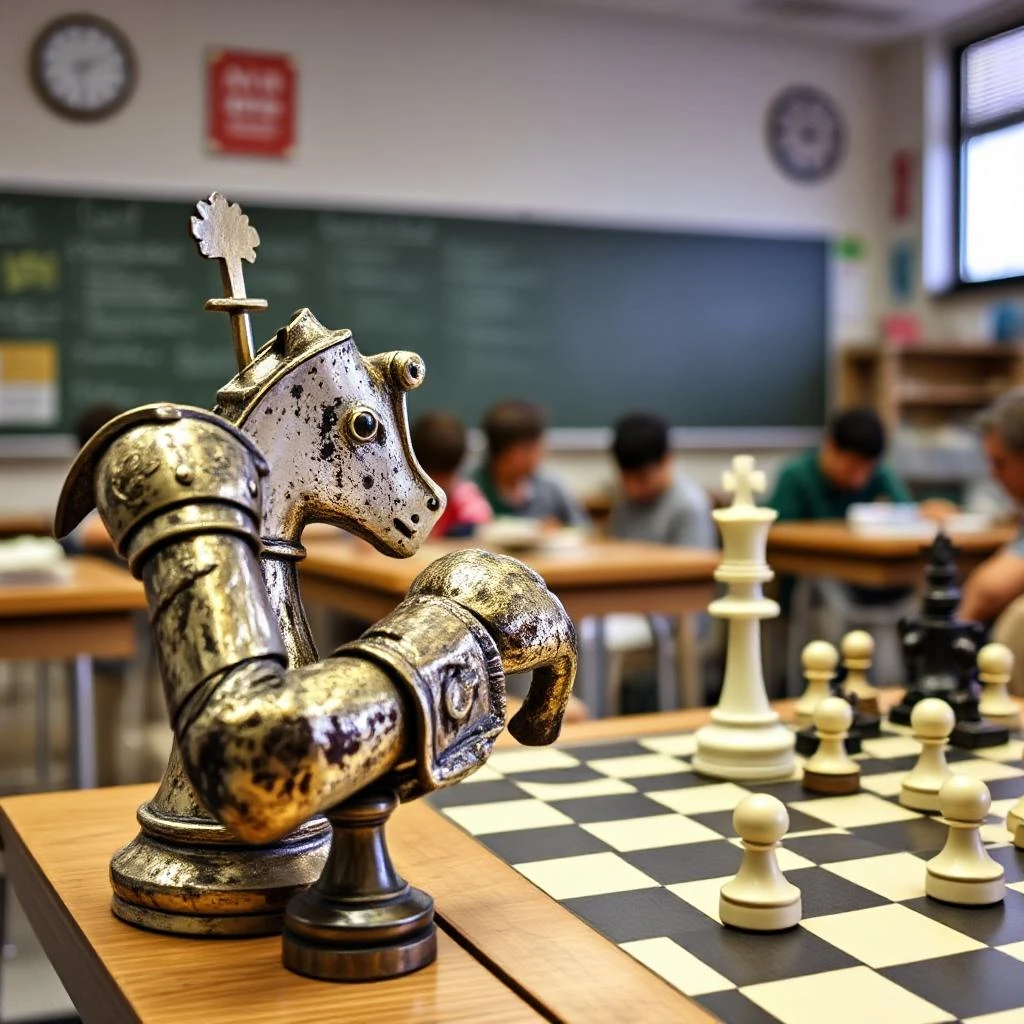The last one
Hi there
This is Profesor Jake and welcomeback to some new activities
We're very excited because it's been a great year with a significative increase in our participants, so from the EXPLORA project we are very grateful
¿Sabías que el ajedrez no solo enseña estrategias, sino que también entrena el cerebro? Diversos estudios han demostrado que este milenario juego estimula habilidades cognitivas clave como la memoria, la atención, la planificación y el control emocional.
Aquí te presento 5 actividades lúdicas que combinan ajedrez y neurociencia para niños de 6 a 12 años. Ideales para usar en el aula, en talleres o incluso en casa.
🎓 ¿Por qué ajedrez y neurociencia?
El ajedrez es una excelente herramienta para potenciar funciones ejecutivas en los niños. A través del juego, se trabajan:
Curiosidades mentales con ajedrez
• ¿Sabías que Magnus Carlsen puede jugar partidas ¡con los ojos vendados?!
• Tu cerebro puede quemar hasta 6.000 calorías en un torneo largo de ajedrez debido al esfuerzo mental.
Did you know that chess not only teaches strategy but also trains the brain? Several studies have shown that this ancient game stimulates key cognitive skills such as memory, attention, planning, and emotional control.
Here are five fun activities that combine chess and neuroscience for children ages 6 to 12. Ideal for use in the classroom, in workshops, or even at home.
🎓 Why chess and neuroscience?
Chess is an excellent tool for enhancing executive functions in children. Through play, the following skills are developed:
✅ Planning and decision-making
✅ Impulse control
✅ Concentration
✅ Frustration tolerance
Mental Chess Curiosities
• Did you know that Magnus Carlsen can play games blindfolded?!
• Your brain can burn up to 6,000 calories in a long chess tournament due to mental exertion.
The CHALLENGES:
Try to play with your chessboard. Close your eyes and answer to a friend what color are next squares: a1/g-5/ b-3/ h-8/ c-7
Los RETOS:
Intenta jugar con tu tablero de ajedrez. Cierra los ojos y respóndele a un amigo de qué color son las casillas siguientes: a1/g-5/b-3/h-8/c-7
Challenge for beginners Reto para principiantes
Whites win material in just one move. Las blancas ganan material en un movimiento.
Solution last week (May 15th)
El caballo mueve a d-7 y amenaza con Jaque al Rey negro,
pero además se aprovecha que el rey tiene que salvarse puede capturar el alfil
o el peón, obviamente el alfil: C d-7 +
The knight
moves to d-7 and threatens the black King with check, but it also takes
advantage of the fact that the king has to be saved and can capture the bishop
or the pawn, obviously the bishop: C d-7 +
And that's all for this 2024-25 see you next course and DON'T forget to send me your solutions, questions, comments, and ideas.
See you soon and keep playing
Remember send your challenges, comments and solutions to
explorajake@gmail.com
or via whatsapp to 682336170
NEXT ACTIVITY SEPTEMBER 2025




















